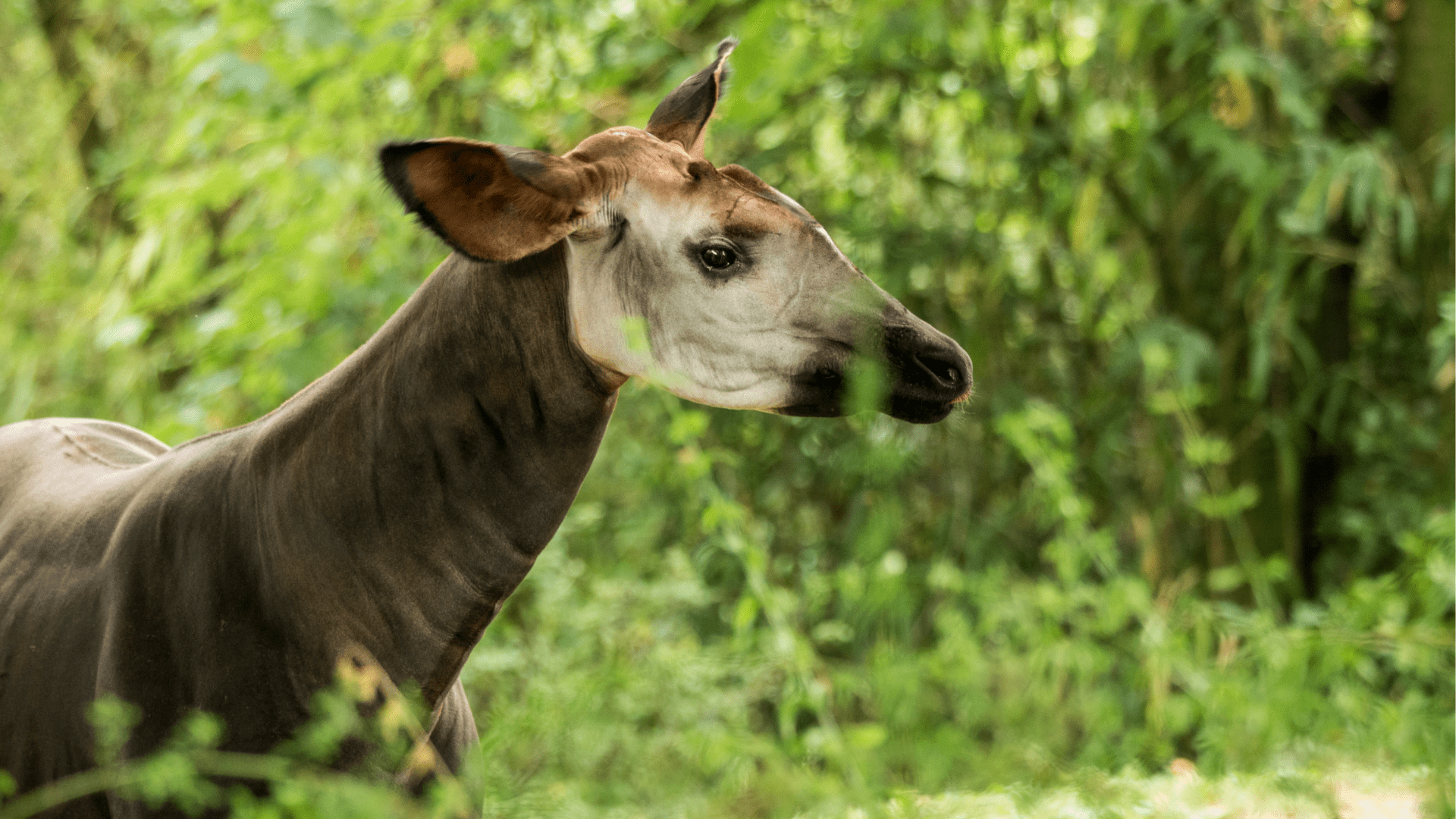Support Gorilla Conservation >

The five foot tall okapi, also known as the forest giraffe, is native only to DRC. After more than half a century with zero observations in the Park, the species was rediscovered in Virunga’s Semliki Valley in 2006. Despite this positive revelation, researchers estimate the total population has halved in the last two decades.
Due to their elusive nature and physical adaptations, okapi are extremely difficult to track and observe in the wild. As such, Western science only confirmed their existence in the year 1901.
The okapi’s stripes allow it to mimic sunlight patterns typical in its rainforest habitat, helping it to avoid predation.
The lush rainforest provides a varied diet of fruits, buds, fungi, leaves and twigs.
Thick, oily fur helps protect okapi against wet conditions and scent glands in its hooves are used for marking territory.
Unlike giraffes, who prefer open savanna, okapis live in the dense, lowland rainforests of central and north-eastern DRC.
They are mostly solitary creatures but are sometimes known to congregate in small groups for grazing, grooming, and even play.
After a gestation period of 15 months, a newborn calf can hold its bowels for 4 weeks to avoid detection by leopards. A mother nests with her calf for the first 6 – 9 weeks, much longer than most ungulates, and uses infrasound to communicate across dense vegetation.
An adult okapi weighs up to 660 pounds (300 kg) and can eat 60 pounds (27 kg) of food each day, including riverbed clay and bat feces for their salts, minerals, and nutrients.
A closer look at the head shape and facial features of giraffes and okapi reveals many more striking similarities.
Like giraffes, male okapi develop horn-like, hair-covered ossicones on their heads.
These are absent in female okapi, who are more reddish in color and slightly taller. An okapi has a long, dextrous tongue for stripping trees of leaves and twigs, which it digests using its four stomachs.
The distinctive stripes of the okapi are resemblant of a zebra and it has large, sensitive ears, much like those of its closest extant relative, the giraffe.
The okapi is an iconic species for the DRC. It has been revered by the Congolese for centuries, particularly by the Mbuti pygmy communities, from whom its name originates. Today, the okapi is a national treasure and features on DRC’s banknotes as well as the logo of ICCN.
It is estimated that fewer than 25,000 okapi are remaining in DRC, leading the IUCN to class the species as endangered. With the rediscovery of the species in the northern forests of Virunga in 2006, it is hoped that with improved conservation efforts the Park can become a refuge for the species once more.

Poaching for bushmeat and skin as a result of poverty and conflict poses the greatest threat to okapi.

Okapi are also threatened by habitat destruction and fragmentation from logging and human settlement.

Conflict surrounding access to DRC’s rich mineral resources makes it difficult to protect okapi. In 2018, a vehicle belonging to the Okapi Conservation Project was attacked and six people were killed.

With the help of Park Rangers and Virunga’s sustainable development aims, Virunga’s okapi can be shielded from poaching and habitat loss.

Accurate data is needed to draw up a conservation strategy, but there has not been a comprehensive survey of Virunga’s northern forests since the 1960s.

It is a priority in the coming years to establish baseline data for the species so that conservation efforts can begin inside and immediately outside the Park.